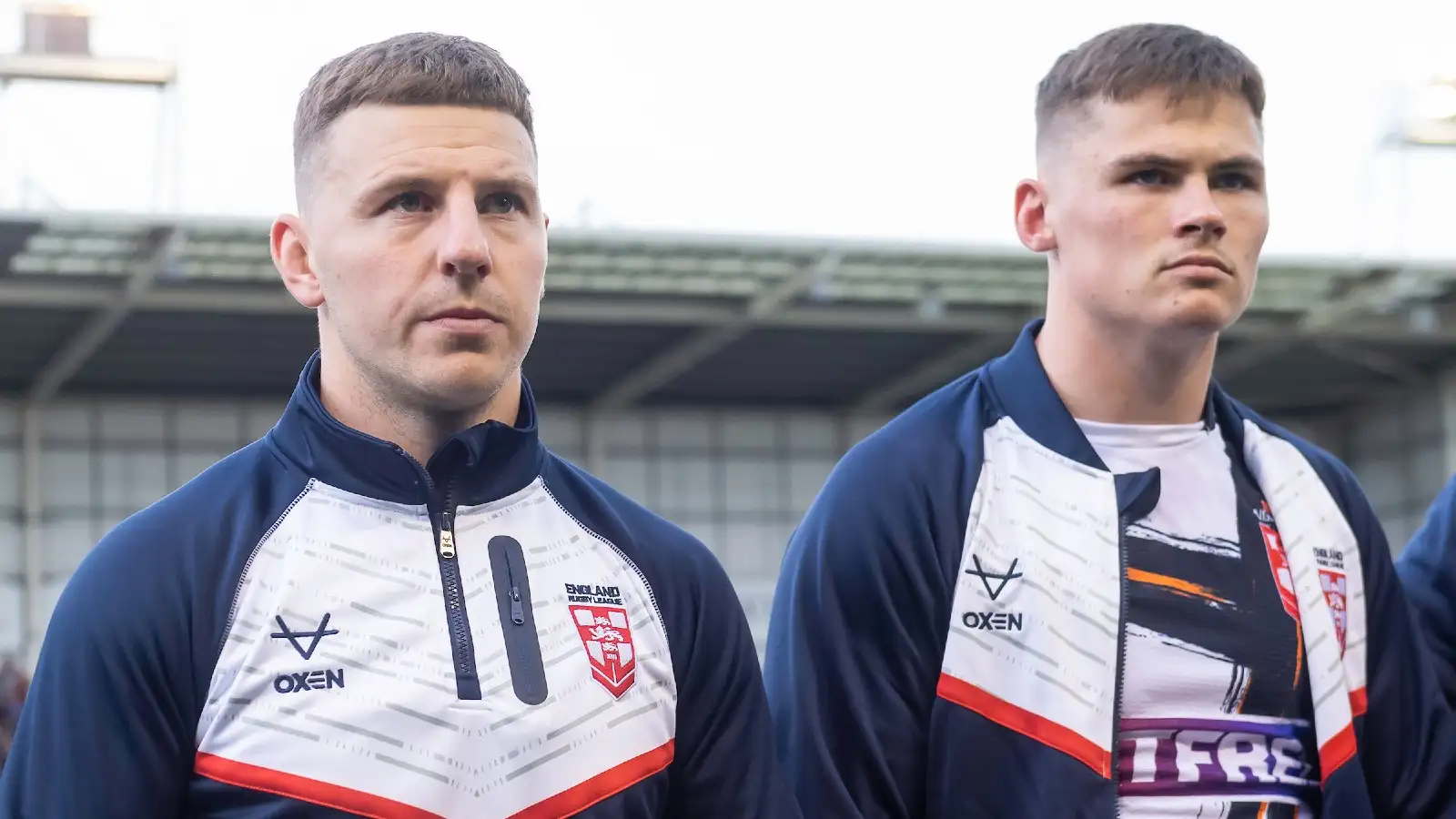New salary cap rules for Super League to help protect against player drain to the NRL

Picture by Allan McKenzie/SWpix.com
Super League will extend its marquee player ruling for the 2024 to help clubs protect against losing the game’s best players to the NRL.
The current two marquee player limit will increase to three, as long as at least one of the players is federation trained.
Although the finite salary cap is to remain at £2.1m for a fifth straight season, there will be further discounts on how much of the marquee player salary will count towards the cap.
Non-federation trained marquee players will remain at £150,000, but federation-trained players will count as £100,000 and club-trained as £50,000.
That means, for example, St Helens could sign Jack Welsby and Lewis Dodd as marquee players and they would only count as £50,000 each towards the cap.
George Williams would count as £100,000 for Warrington, but would only have counted as £50,000 if still at Wigan.
As well as trying to keep the best talent from going elsewhere, the changes are designed to encourage clubs to develop outstanding British players.
The marquee player rule was first introduced for the 2016 season, when they were initially allowed to sign one marquee player if they could pass the affordability criteria.
It was then increased to two in 2018 and discussions have been ongoing for several months about the latest increase to three.
The level of the salary cap is expected to be reviewed as part of IMG’s plans to ‘re-imagine rugby league’.
Although there have been calls for an increase, the clubs were keen to promote financial sustainability, especially given the additional requirement of paying back the Sport Survival Fund loans that the sport received during the coronavirus pandemic.
During the discussions which resulted in the marquee player rule change, IMG expressed a view that clubs should be permitted to invest when affordable.
The RFL’s Director of Operations and Legal, Robert Hicks, said: “In making these recommendations, which have now been approved by the RFL Board and reviewed by the RL Commercial Board, we had to balance a number of differing considerations, and also differing views among Super League clubs.
“Financial sustainability remains imperative, for the credibility of the Super League competition and of Rugby League as a sport – and also now to ensure our clubs meet their obligations to Government under the Sport Survival Fund, as we continue to rebuild after the pandemic.
“We must also recognise the need for Super League to remain an elite and attractive competition, nationally and internationally.
“That is challenging, as while we welcome the growing strength of the NRL – and the NRLW – as good news for the sport of Rugby League, it can only increase the lure of a move to the southern hemisphere for our leading players.
“We therefore agreed with IMG, our strategic partners, that we should amend the cap regulations to allow clubs to spend more on keeping our outstanding homegrown players in the Super League competition – and also to increase the salary cap rewards for those clubs who develop those players.
“We have also increased the reward for clubs who invest significantly in player welfare, taking account of the strong views of clubs that we needed to reward investment in the Player Pathway and Welfare provisions.
“The introduction of a Financial Sustainability Cap for each club is also significant, allowing closer real-time monitoring of the off-field health of our clubs – and the new working group will allow a range of views, including from clubs and IMG, to contribute to our discussions about further amends to the cap from 2025.”
The RFL board approved the changes following a meeting with the RL Commercial Board in Newcastle on Friday.
Other changes sees the Player Welfare Allowance increase from £15,000 to £50,000 per year and the value up to which Under-21 Players will be exempt from a club’s cap will rise from £25,000 to £30,000.
The final change will see each club in all three competitions set a Financial Sustainability Cap for 2024, set against the Financial Sustainability Regulations – with a working group to be set up to review the Regulations for 2025.
The working group will include three representatives of Super League clubs, two from Championship/League One Clubs, one from RL Commercial, one from IMG and two from the RFL – the Director of Finance, Facilities & Central Services, and Robert Hicks.
It will be tasked with reviewing the finite cap, implementing the IMG recommendations around a Salary Cap Floor and looking at all ways of ensuring sustainable investment and protecting the overall financial sustainability of the professional game.
READ NEXT: Magic Weekend set to return in 2024 after clubs fight to save it